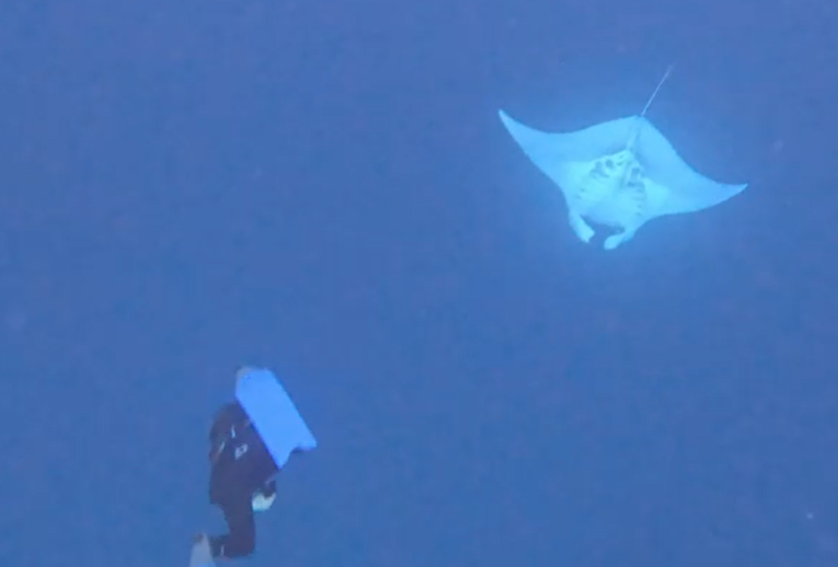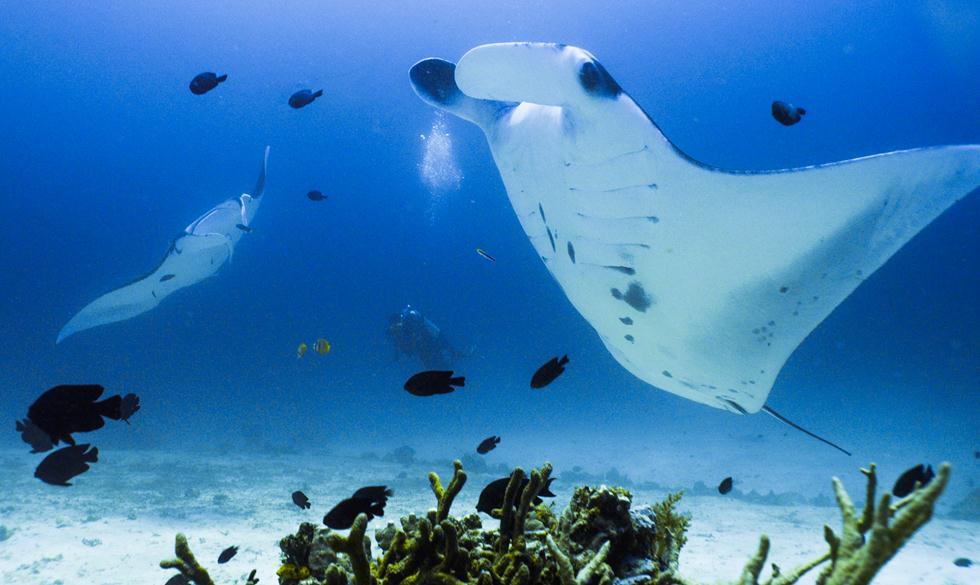Giant manta ray near Eilat
(Video: Omri Omassi, Nature and Parks Authrity)
Yael Lulyan and Nadav Dayan, who were free diving in the Eilat Gulf on Thursday, spotted a rare giant manta ray swimming close by and documented their encounter.
More stories:
"Yael signaled for me to look toward the reef in amazement. I turned around and saw the giant manta ray,” Nadav said. “We saw it right next to the Dolphin Reef. We swam alongside it heading for the bridge, where it stopped below us and remained in place for half an hour. It was an amazing experience, and the second-best morning of my life (the first was when I climbed Everest). I felt fortunate."
Omri Omassi, a marine unit supervisor in the Eilat area for the Israel Nature and Parks Authority, who has documented such visits in the past, added: "We’re happy to see sightings of manta rays and batoids in the Gulf of Eilat. An adult giant manta usually reaches a width of 4.5 meters, but sightings of mantas measuring over 9 meters have been documented in the past."
Adi Barash, a post-doctoral researcher at the Steinhardt Museum of Natural History and CEO of the Sharks in Israel organization, provided more details about the intriguing species. "The giant manta ray is the largest species among the batoids and is also among the five largest Chondrichthyes (sharks and batoids),” according to Barash.
“The giant manta is the most desired sight of every diver in the world, though their sightings in Eilat are rare, with only a few encounters registered yearly,” she added. “Today, the giant manta is classified as 'vulnerable' by the International Union for Conservation of Nature (IUCN) due to the high value of its flesh and gill rakers, and its high fishing rate in various areas around the world.”





